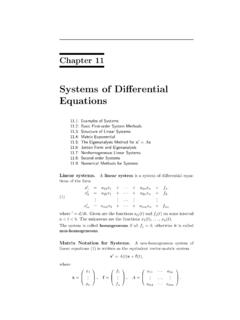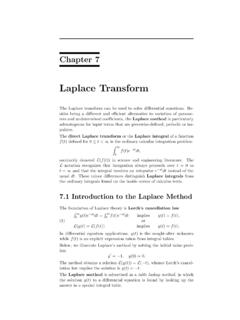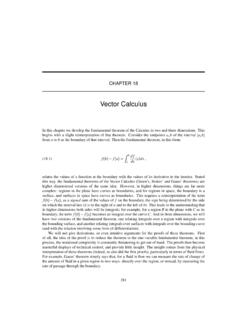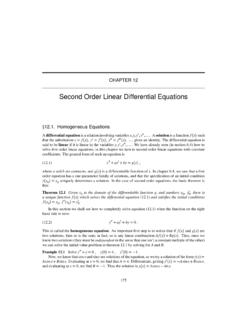Transcription of Directional Derivatives - Math
1 Directional DerivativesDirectional DerivativesWe know we can writeThe partial Derivatives measure the rate of change of the function at a point in the direction of the x-axis or y-axis. What about the rates of change in the other directions?DefinitionFor any unit vector, u = ux,uy letIf this limit exists, this is called the Directional derivative of f at the point (a,b) in the direction of f be differentiable at the point (a,b). Then f has a Directional derivative at (a,b) in the direction of u. u = uxi + uyj and Duf(a,b) = u f(a,b).^^ EX 1 Find the Directional derivative of f(x,y) at the point (a,b) in the direction of u . (Note: u may not be a unit vector.)a) f(x,y) = y2ln (x) (a,b) = (1,4)u = i - jb)f(x,y) = 2x2sin y + xy(a,b) = (1, /2)u = 2i + j ^^^ ^Maximum Rate of ChangeWe know What angle, , maximizes Duf(a,b)?
2 TheoremThe function, z = f(x,y), increases most rapidly at (a,b) in the direction of the gradient(with rate ) and decreases most rapidly in the opposite direction (with rate - ).EX 2 For z = f(x,y) = x2 + y2, interpret gradient vector. f(a,b)^^ f(a,b) EX 3 Find a vector indicating the direction of most rapid increase of f(x,y) at the given point. Then find the rate of change in that ) f(x,y) = eysin x at (a,b) = (5 /6,0).b) f(x,y) = x2y - 2/(xy) at (a,b) = (1,1)EX 4 The temperature at (x,y,z) of a ball centered at the origin is Show that the direction of greatest decrease in temperature is always a vector pointing away from the extra (cool) factTheoremThe gradient of z = f(x,y) (w = f(x,y,z)) at point P is perpendicular to the level curve (surface) of f through 5 Graph gradient vectors and level curves for.












